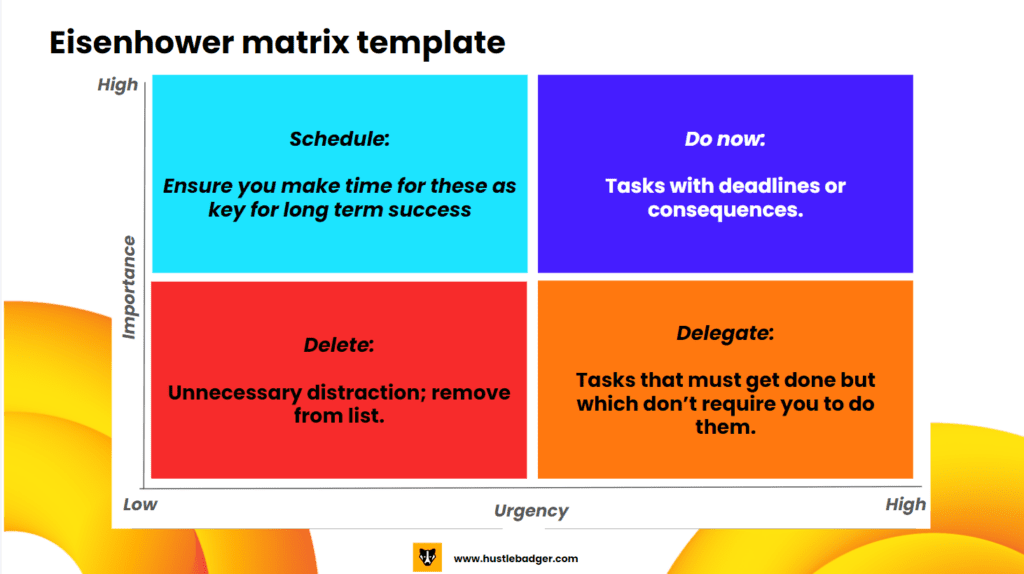Name one technique for dealing with stress.
Regular exercise, healthy eating, getting enough sleep, taking breaks, practicing relaxation techniques like deep breathing or meditation.
Name the two types of Goals.
Long term goals and short term goals.
What should you do to concentrate on your work?
Turn off your phone, list out your work, optimize your workspace, avoid multitasking, set a deadline, etc.
Define prioritization.
The process of ranking tasks based on their importance and urgency to focus on what matters most.
How can planning help you?
A fundamental part of time management is planning. Planning offers aid by allowing you to prioritize tasks, anticipate challenges, and allocate resources effectively, leading to increased productivity and reduced stress.
What does the word cope mean?
(of a person) deal effectively with something difficult.
What does "SMART" (goals) stand for?
Specific, Measurable, Achievable, Relevant, Time-bound.
Define procrastination.
The action of delaying or postponing something.
Name one way to help you organize your priorities.
The Eisenhower Matrix, Make a To-Do-List, Pareto principle, Delegate when possible, etc.
What are the four C's of planning?
Creativity, Critical thinking, Communication, and Collaboration.
How can time management help with stress?
Effective time management can significantly reduce stress by providing structure, increasing productivity, and fostering a sense of control, allowing you to prioritize tasks and allocate time for relaxation and self-care.
The main obstacle when trying to complete a goal is that the goal is not ____.
Achievable/Realistic.
Why is productivity so important?
It encourages work to be completed in a timely manner, allowing for more time to do other things that you want to do.
Give an example of a prioritization matrix
(Sample):
What Can you plan out?
Anything.
What are some emotional symptoms of stress?
Emotional symptoms of stress can include feeling anxious, overwhelmed, irritable, or depressed, along with difficulty concentrating, making decisions, or remembering things.
What is the first step in setting a goal?
Defining the goal.
What are some skills you should have to help you be more productive?
To enhance productivity, cultivate skills in prioritization, organization, communication, problem-solving, and decision-making, along with the ability to focus and manage distractions.
What are the four P's of prioritization?
Prioritize, Plan, Prepare, and Perform.
What are some ways you can plan out tasks.
To effectively plan out tasks, you can break down large goals into smaller, manageable steps, prioritize tasks based on importance and urgency, and utilize tools like to-do lists or planners to organize your workload.
Why is it important to learn how to manage your stress?
Learning to manage stress is crucial for maintaining overall well-being, as chronic stress can negatively impact physical and mental health, relationships, and productivity.
Three resources that can conflict in goal setting?
Time, energy, money.
How does productivity relate to time management?
Productivity and time management are intrinsically linked: effective time management, which involves planning, prioritizing, and allocating time efficiently, is a key driver of increased productivity, allowing individuals to accomplish more in less time.
How does prioritization help you.
Prioritization allows us to focus our time and energy on our most important and urgent tasks first, ensuring that we meet important deadlines and achieve essential goals
What are the 4 types of planning?
Strategic, tactical, operational, and contingency.